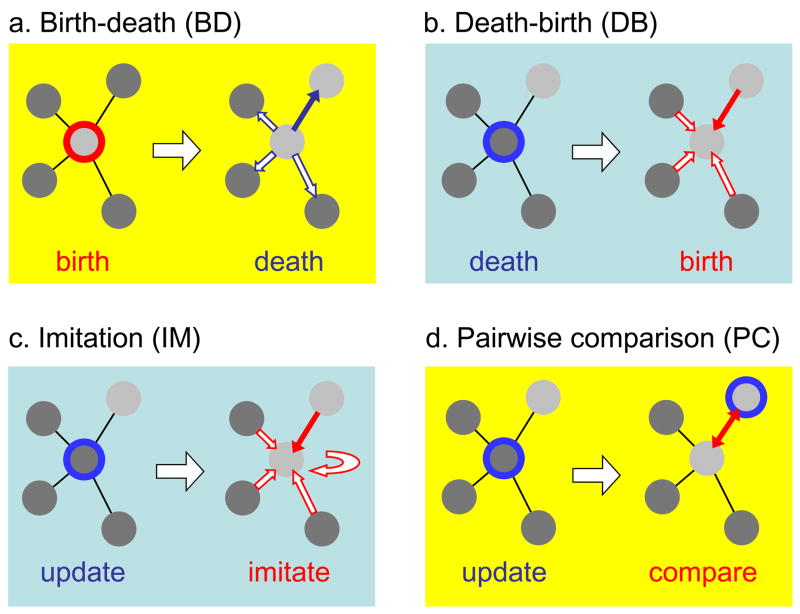Figure 1.
Four different update rules are studied in this paper. (a) Birth-death (BD) updating. A player is chosen for reproduction from the entire population proportional to fitness. The offspring replaces a randomly chosen neighbor. (b) Death-birth (DB) updating. A random player is chosen to die. The neighbors compete for the empty site proportional to their fitness. (c) Imitation (IM) updating. A random player is chosen for updating his strategy. The player keeps his current strategy or imitates one of the neighbors’ strategies proportional to fitness. (d) Pairwise comparison (PC) updating. A random player is chosen for updating his strategy. One of the neighbors is chosen at random. The first player either keeps his current strategy or adopts the neighbor’s strategy with a probability that depends on the payoff difference. Random choices are shown in dark blue. Choices that are proportional to fitness are shown in red. BD and PC updating (yellow background) lead to identical evolutionary dynamics in our present analysis. DB and IM updating (light blue background) have similar behavior.

